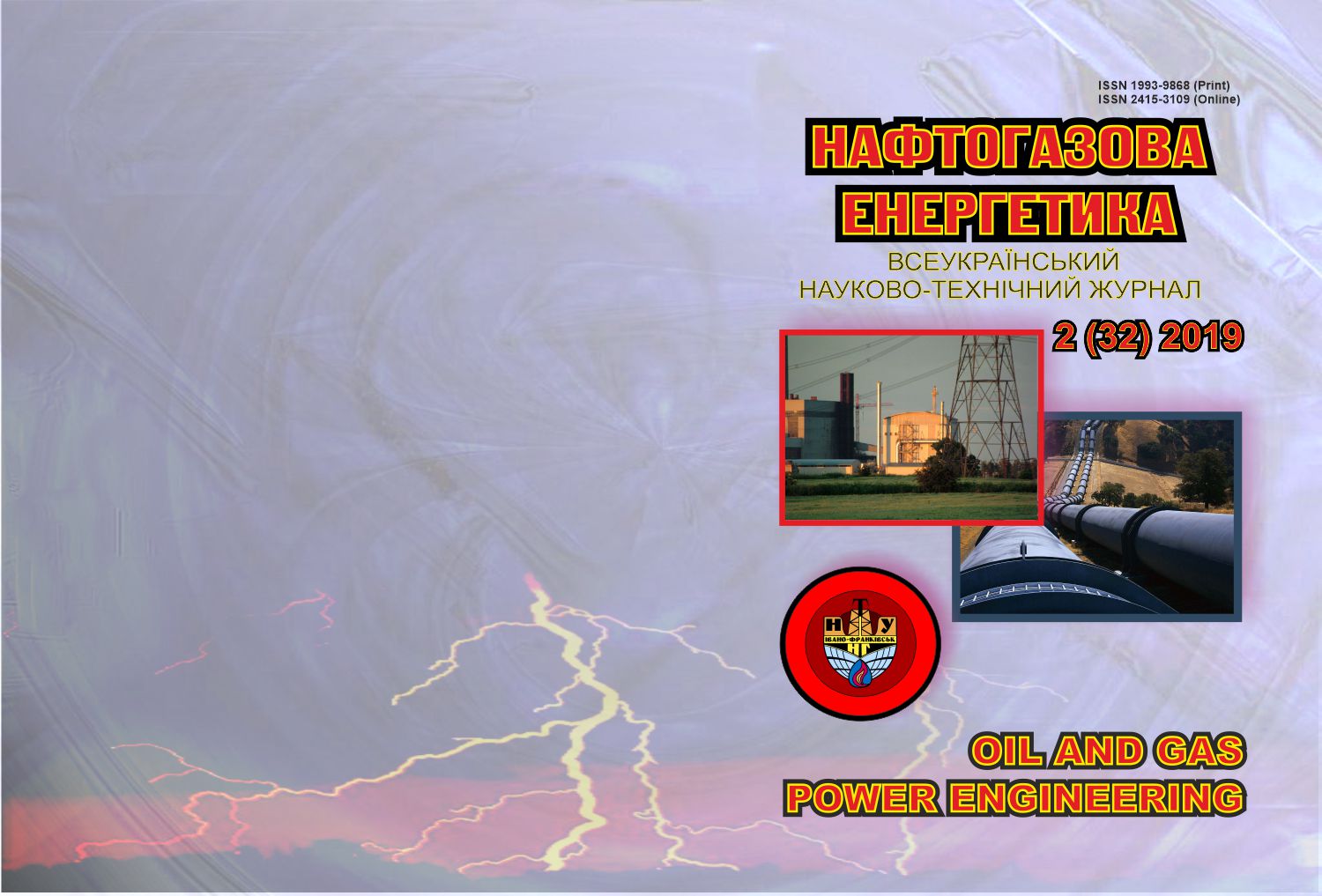Improving the efficiency of oilfield electric power distribution
DOI:
https://doi.org/10.31471/1993-9868-2019-2(32)-79-87Keywords:
electrical network, electricity transmission, power loss, efficiency factor.Abstract
The issues of increasing the efficiency of electricity transmission to consumers with different nature of their load are considered. The dependence of the efficiency of the electric network of the oil field, consisting of a power line and a step-down transformer, on the total load power at various ratios between the active and reactive components of the power is analyzed, and the conditions under which the maximum transmission efficiency can be ensured are determined. It is shown by examples that the power transmission efficiency depends not only on the active load, but also largely on its reactive load. In the presence of a constant reactive load and an increase in active load, the total power increases and the power transmission efficiency decreases. In the low-load mode, the schedule for changing the power transmission efficiency approaches a parabolic form, since the influence of the active load on the amount of active power loss decreases, and their value will mainly depend on reactive load, which remains unchanged. The efficiency reaches its maximum value provided that the active and reactive components of the power are equal. In the case of a different ratio between them, the efficiency decreases. With a simultaneous increase in active and reactive loads and a constant value of the power factor, the power transmission efficiency is significantly reduced due to an increase in losses. With a constant active load and an increase in reactive load, efficiency of power transmission decreases, since with an increase in reactive load, losses of active power increase, while the active power remains unchanged. The second condition, under which the line efficiency will be maximum, is full compensation of reactive power. Therefore, in order to increase the efficiency of power transmission, it is necessary to compensate for the reactive load, which can reduce the loss of electricity and the cost of its payment and improve the quality of electricity. Other methods are also proposed to increase the efficiency of power transmission by regulating the voltage level in the power center, reducing the equivalent resistance of the line wires, optimizing the loading of the transformers of the step-down substations and ensuring the economic modes of their operation.
Downloads
References
Reduction of Technical and Non-Technical Losses in Distribution Networks. CIRED Working Group CC-2015-2 on losses reduction. Final report. 20 .11.2017.
Zhelezko Yu.S. Losses of Electricity. Reactive power Electricity Quality: A Manual for Practical Calculations. Moscow: ENAS, 2014. 456 p.
Burbelo M. Ya. Mathematical problems of electric power engineering. Mathematical modeling of power supply systems: teach. manual. Vinnytsia: VNTU, 2016. 185 р.
Tsyplenkov DV, Krasovsky P. Yu. Methods and means of reducing the technical losses of electricity in the elements of power supply systems. Electrical engineering and power engineering. 2015. No. 1. P.77-82.
Romanyuk Yu.F., Kolomoytsev K.V. Improvement of the economic efficiency of the transformers of downstream substations of the oil and gas industry enterprises. Oil and Gas Power Engineering. 2014. No. 2 (22). P. 71-78.
Romanyuk Yu. F., Solomchak O. V. Optimization of voltage levels in electric networks in order to reduce power and energy losses in transformers. Promelektro. 2014, No. 6 (90). P. 45-48.
Romanyuk Yu.F., Fedoriv M.Ya., Terletskyy Yu.O. Optimization of operating modes of transformers of downstream substations of oil-field networks. Oil and Gas Power Engineering. 2014. No. 2 (22). P. 63-72.
Romaniuk Y. F., Solomchak O.V. Appli-cation of the method of lagrange's undetermined multipliers in determination of optimal reactive power compensation. The current stage of development of scientific and technological progress' 2019. SWorld – March. 2019. URL: https://www.sworld.com.ua/index.php/ru/ge7-5/31224-ge7-030.
Khomenko I.V., Piskuryov M.F., Stasyuk I.V. On the issue of compensation of reactive power in electric systems. Bulletin of the National Technical University "KhPI". Sir Problems of perfection of electric machines and apparatuses. Theory and practice. Zb. sciences works. Kharkiv: NTU "KhPI", 2018. No. 32 (1308). P. 71-76.
Demov O. D., Nikitenko Yu. V., Kono-plyts'kyy VA Influence of compensating installations of industrial consumers on reduction of losses in electric networks of energy supplying companies. Bulletin of the Vinnitsa Polytechnic Institute. 2015. No 6. P. 125-128.


.png)






1.png)









